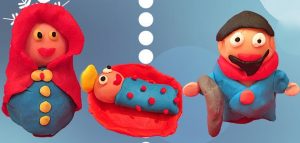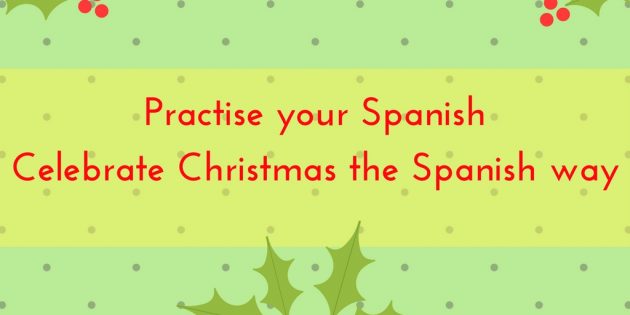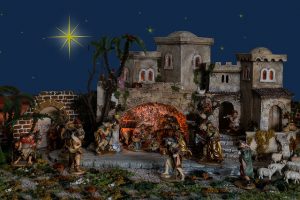Looking for an immersion experience? here is a thought: why not Celebrate Christmas the Spanish way.
Here are 5 things you can add to your Christmas celebrations, practise your Spanish and celebrate Christmas the Spanish way.
1. The Christmas lottery : El Gordo de Navidad
In Spain Christmas really starts on the 22nd of December. It is the draw for the lottery, El Gordo, or The Fat One. Pretty much every Spaniard buys a ticket, and if a winner comes up from a particular town, it is very likely that there will be many winners from the same place. Whole families gather around the television to see if they have won.
If you are not travelling to Spain before Christmas or don’t have anyone that is there and can buy one for you, you can now also buy them online!
For my children this is one of the best days if we are in Spain. They turn on the TV after breakfast, since the nationally televised broadcast starts early, and they are fixated to the screen watching these school children reading the numbers of the drawn balls in a sing-song tone that they end up copying for the whole day. Normally by lunch time where the winner prize has been sold is known and the lunchtime news are full of happy people and lots of champagne, or Cava I should say.
Click here to watch the draw (and the TV add, one of the most awaited in the year!)
2. The Christmas tree: el Árbol de Navidad.
3. The Nativity Scene: el Belén
Much more traditional than the Christmas tree, the Nativity scene is a model representing the scene of Jesus Christ’s birth, displayed in homes or public places at Christmas. A Spanish Nativity scene is called a Belén. This word means Bethlehem, since a Spanish Christmas scene includes the entire town of Bethlehem and what often looks like all of Judea. In addition to angels and shepherds and sheep, there are farmers with their plows, hunters with strings of game, washerwomen washing and bakers baking. There are caves and houses and temples, rocks and streams and mountains. Off in the distance, there are the Magi on their camels, and sometimes you will see the soldiers of Herod, ominously advancing with their swords drawn. All the while, children like small lambs dance through the scenes, bringing their offerings to the Child, the Niño, who sleeps in a straw-filled manger under the gaze of his adoring Mother and the vigilant St. Joseph.
You will find Nativities everywhere, there are special exhibitions in museums ad galleries, each neighbourhood can have their own particular one and there is even living Nativities.
Our Belén at home had the main scene sculpted by me and my older brother, we had 2 Virgen Marys two st Josephs, 2 babies Jesus etc.; we made them at our ceramics class!
For an idea on how to make your own crafty Nativity have a look here.
 Here is what a traditional Belén would look like:
Here is what a traditional Belén would look like:
4. Christmas sweet treats: turrón y polvorones
The most typical Christmas treat in Spain is turrón, a confection, typically made of honey, sugar, and egg white, with toasted almonds or other nuts. An other big favourite is Polvorones, a type of heavy, soft and very crumbly Spanish shortbread made of flour, sugar, milk, and nuts, especially almonds.
I am not sure which is my favourite, but to decide for yourself you will be able to find them here, or find them at Brindisa with shops in several London locations.
This is the one thing you cannot miss in your Spanish Christmas!
5. The three wise men: Los tres Reyes Magos
Once you have had enough of Christmas, don’t think it is all over, In Spain Christmas celebrations continue up to the 6th of January when many Christians around the world annually celebrate Epiphany. It is a public holiday in many countries and marks the event in Jesus Christ’s life, according to the Christian Bible, when the three wise men, or kings, visited infant Jesus.
Children used to get their presents then and not at Christmas Day brought by Father Christmas, nowadays most children get presents both days!
The best thing about it are the huge parades that every city has, where children can see the Three Kings before they come over to their houses and leave the presents in the middle of the night. Children leave their clean shoes out and some snacks for the camels and hope to see some presents next day, some naughty children might find coal in their shoes if they haven’t been good throughout the year!
For breakfast on the 6th the typical cake of this day is called Roscón de Reyes. You can order yours here in Iberica restaurants, all benefits are donated to Children in need.
Spanish Christmas Vocabulary:
1.El Gordo de Navidad
2. El Árbol de Navidad
3. El Belén
4. Turrón y polvorones
5. Los tres Reyes Magos
6. Roscón de Reyes
Now you have all the information to celebrate a Spanish Christmas this year! I am sure you will have a great time building a Nativity Scene and eating some delicious turrón, of course do let me know if you buy a Spanish Lottery ticket and you win!
To continue your language learning with us, check out our free bundle with videos, songs, vocabulary and activities here.
If you like it, be fast we are running a half price membership until the end of December 2017, join our club here!
However you celebrate it, have a lovely Christmas.
İ Feliz Navidad !






Leave A Response
You must be logged in to post a comment.